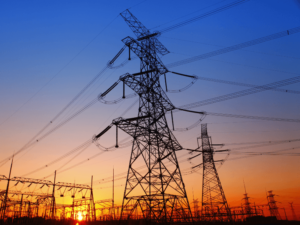A Greener Grid: How to Build Resilience and Reliability
Sarah Schnurr, Stratigic Advisor, EIS Council
As we move towards a greener grid, how do we build critical infrastructure resilience and reliability into the electric grid to secure our future?
Securing our grid is vital. Take, for example, what happened in February 2021 in Texas when the texas grid was within four minutes of completely shutting down. Many people suffered from the lack of electricity which extended for a long period of time, and unfortunately, many died. If the grid had gone down completely and Texas would have had to blackstart, or restart, the grid, it would have taken weeks. And let’s not forget the grave consequences the people of Texas and the economy of the nation as a whole would have endured.
It would have been unthinkable.
So, Where Do Our Blackstart Capabilities Stand?
Blackstart is the process of restarting the grid when it’s gone down in its entirety. It’s a long and complicated process, and while we have exercised blackstart in the past, it hasn’t actually had to be in use in recent years. And this is an issue, as ensuring we’re prepared for a total grid shutdown is critical to our survival.
In our modern world, everything in our lives depends on electricity. With increasing climate challenges and threatening behaviors from adversary countries and terrorist groups, building resilience in this critical resource is becoming especially important. Ensuring that we will be able to blackstart the power grid when needed is essential.
Great strides have been made in restoring relatively small blacked-out regions following conventional disasters by “leaning on” electricity from outside an outage zone. But, over a large area, and certainly if an entire grid were to go down, restoration from outside would not be workable. And since we have not had a large enough disaster to require blackstart, this capability has not been seen as a critical priority.
As our power grids become greener, we need to keep in mind that resilience, including blackstart, must be built in from the beginning. Reworking facilities that are already in place would be far more expensive and difficult.
Want to learn more?
EIS Council is providing a free webinar featuring a group of international experts to discuss the issues of blackstart both in the current grid configuration and in the future green grid scenario.
Please join us and share your questions, knowledge, and ideas in the chat so we can bring this issue to the forefront. Our It Isn’t Easy Being Green webinar will take place on Thursday, November 3rd, at 11:00 a.m. Eastern time.
Want to help us in our efforts to secure the electric grid? Join our hazard resilience exercise now.
Create Impact with us:
Join our membership and
contribution programs
Participate in our
upcoming events:
Schedule a call with
our experts:
Cyber Resilience in the Energy Sector: Safeguarding the Grid from Digital Disruptions
In today’s interconnected world, the energy sector stands as a vital backbone of national and global infrastructures, facilitating everything from lighting our homes to powering industries. However, this sector is increasingly finding itself in the crosshairs of cybercriminals, making cyber resilience not just a matter of technological integrity but of national security. The concept of […]
The Role of Local Governments in Strengthening Infrastructure Resilience
The significance of local governments in strengthening infrastructure resilience cannot be understated. Often perceived as entities primarily focused on addressing routine community concerns and improvements, their responsibilities extend far beyond these day-to-day operations. In the realm of preparing for and mitigating the effects of large-scale, catastrophic events—referred to as “black sky” disasters—local governments emerge as […]
Navigating Complex Interdependencies and Building Resilience in the E-Sector
In today’s interconnected world, the electric sector is more than just a utility provider; it’s a cornerstone of modern life. Its influence extends beyond mere power supply, touching virtually every aspect of our daily activities, from powering homes and businesses to fueling transportation and technology. This pivotal role, however, is not without its complexities. The […]
